I wrote this chapter titled ‘The Voice of Jesus through the Voice of Matthew and its Pastoral Implications’ for a Festschrift Well Done, Good and Faithful Servant in honour of Stephen Wright, long time tutor in Biblical Studies at Spurgeon’s College in London, and current chair of the Grove Biblical series editorial group.
Stephen Wright has offered the people of God an important gift in his exploration of how we read the gospels,1 in doing this how we hear the voice of Jesus, and through this what God is saying now in our own historical, cultural and pastoral context. In doing this, he is enriching us by reminding us that, as we read the texts of the Bible as scripture, we are engaged in three levels of listening:
- Listening to the voice of Jesus in his teaching and his ministry;
- Listening to the apostolic testimony to that,2 in the way that the gospels writers have themselves understood and interpreted the voice of Jesus3;
- Listening to what God is now saying to his people as we receive this apostolic testimony to the person of Jesus.4
In this chapter, I will explore a particularly interesting example of this, in Matthew’s collection of Jesus’ parables of the kingdom in Matthew 13.5 The arrangement of Jesus’ teaching here highlights well the distinctive editorial hand of the author of the gospel, demonstrated both by the internal structure and organisation of his material, and the comparison and contrast with the parallel accounts of these parables in the other gospels. As a result of this, we can learn much about issues of discipleship and the kingdom, and the implications of Jesus’ teaching as Matthew has understood it for contemporary questions of discipleship.
Context in Matthew and comparison with Mark and Luke
It has long been recognised that Matthew has arranged the bulk of the teaching of Jesus into five main units,6 suggesting a strong parallel with the five Books of Moses (the Torah or Pentateuch) and delineated these with by means of distinctive introductions and conclusions to each block:
| Text | Introduction | Theme | Conclusion | |
| 1 | Matt 5–7 | Seeing the crowds, he went up on the mountain, and when he sat down | Discipleship | And when Jesus finished these sayings… (7.28) |
| 2 | Matt 10 | And he called to him his twelve disciples…These twelve Jesus sent out, instructing them | Being sent on ‘mission’ | When Jesus had finished instructing his twelve disciples… (11.1) |
| 3 | Matt 13 | That same day Jesus went out of the house and sat beside the sea. | Parables of the kingdom | And when Jesus had finished these parables… (13.53) |
| 4 | Matt 18 | At that time the disciples came to Jesus… | Life in the ekklesia | Now when Jesus had finished these sayings… (19.1) |
| 5 | Matt 24–25 | As he sat on the Mount of Olives, the disciples came to him privately… | The end of the temple and the end of the age | When Jesus had finished all these sayings… (26.1) |
There are some things to note about the shape and ordering of these units.7 First, there does appear to be an internal theological logic to the sequence:
- Jesus calls us into the life of discipleship, and we discover the consequences for the way we live;
- He calls us to him to then send us out to share this with others8;
- We then discover what happens when we go, and the way the kingdom grows and develops9;
- There is a particular dynamic to our life together as we grow in discipleship and mission10;
- We need to begin with the end in mind, which for Jesus’ first disciples had two parts—the destruction of the Jewish temple and the development of the gentile mission, and the ultimate end of the age11.
Secondly, the introductions to each unit vary from one to another, though in three out of five Jesus is said to sit or be seated, the traditional Jewish pose for someone teaching.12 However, the conclusions to each section are in strong parallel with one another, including a word-for-word repetition ‘And it came to pass when Jesus had finished…’ (AV, kai egeneto hoti etelesen ho Iesous) these words (in 1, 4, and 5), or instruction (in 2), or these parables (in 3). This is interesting when we consider that most of the early recipients of this and the other gospels would have heard them read aloud, rather than read them for themselves. So Matthew’s structure of gathering Jesus’ teaching into five blocks would not have been apparent at the beginning of each section, but only retrospectively at the end.13
Comparing the parables in their order in Matthew 13 with Mark and Luke, we can see some clear distinctives in Matthew’s presentation.
| Matthew | Mark | Luke | |
| 1–9 | Parable of the sower | 4.1–9 also following question about true family | 8.4–8 shorter, following mention of women supporting Jesus |
| 10–17 | Why Jesus speaks in parables | 4.10–12, much abbreviated | 8.9–10 as Mark, but shorter |
| 18–23 | Explanation of sower | 4.13–20 followed by saying about things being brought into the light | 8.11–15, also briefer, also followed by saying about light |
| 24–30 | Parable of wheat and tares | — | — |
| 31–32 | Parable of mustard seed | 4.30–32 followed by stilling the storm | 13.18–19 in a garden not a field |
| 33 | Parable of leaven | — | 13.20–21 |
| 34–35 | Fulfilment saying | 4.33 without OT reference | — |
| 36–43 | Explanation of wheat and tares | — | — |
| 44 | Parable of hidden treasure | — | — |
| 45–46 | Parable of pearl of great price | — | — |
| 47–50 | Parable of the net | — | — |
| 51–53 | Parable of the householder | — | — |
We can see immediately that the first half of this chapter has a similar shape to Mark 4, but functions in a different way. Mark 4 functions as an introduction to and explanation of the teaching of Jesus—but is in fact the only major unit of Jesus’ teaching until the ‘Little Apocalypse’ in Mark 13 (parallel to the first part of Matthew 24). Mark includes only eight parables of Jesus, and instead makes room for longer and more detailed accounts of Jesus’ meeting with people and healing them.
Luke’s account of the parable of the sower parallels Mark more closely than Matthew, but is shorter than either. Rather than making space for accounts of the ministry of Jesus, as Mark does, Luke instead makes room for more of his teaching in parables, including 24 in total of which 18 are unique to Luke.
It is not obvious what the relationships here tell us about the ‘Synoptic problem’, the relationship between the three texts as written sources. Assuming each later author had the earlier texts in front of him, it is possible that Matthew expanded the material in either Luke or Mark and organised it? Given its evidently careful structure, is it possible that either Mark or Luke broke up this passage in Matthew and placed the material in a different order? I am not sure there is a strong argument either way.14 But we can note here that Matthew sometimes agrees with Mark against Luke (in keeping the parable of the mustard seed close to the parable of the sower) and Luke agrees with Mark against Matthew (in including the saying about things being brought into the light), we have one of the rare occasions when Matthew and Luke agree against Mark (in keeping the mustard seed and the leaven as parallels).15
There are three small details of contrast it is worth noting here. First, Matthew records Jesus giving a simpler introduction to the parables of the kingdom. Mark has ‘Thus is the kingdom of God, as a man…’ (Mark 4.26) and the more reflective ‘With what can we compare the kingdom of God, or what parable shall we use for it?’ (Mark 4.30), and Luke 13.18 and 20 have the similar ‘What is the kingdom of God like? And to what shall I compare it?’ and ‘To what shall I compare the kingdom of God?’. By contrast, Jesus in Matthew uses the verbal form once (‘The kingdom of heaven may be compared to… Matt 13.24) but thereafter says directly: ‘The kingdom of heaven is like…’ (vv 31, 33, 44, 45, 47, and 52 with adaptation).
Secondly, Luke slips into the interpretation of the parable of the sower an apocalyptic term, ‘patient endurance’ (Luke 8.15) which we also find in Rev 1.9.
Thirdly, in Matthew Jesus concludes both the parable of the sower and its interpretation by mentioning the fruitful seed in reverse order of fruitfulness (100, 60, 30) in contrast to both Mark and Luke. I have not found any explanation of this! But it leads us into the question of the structure of Matthew 13 as a chapter, and from there observations about the relations of the parables to one another.
The structure of Matthew 13
There has been some debate about the structure of the parables and the narrative in which they are located. To address these questions, we need to observe the basic shape of the text:
1–3 Narrative introduction
3–9 Parable 1 (sower and soils)
10–17 Narrative commentary (why parables)
18–23 Explanation of parable 1
24–30 Parable 2 (wheat and tares)
31–32 Parable 3 (mustard seed)
33 Parable 4 (leaven in dough)
34–35 Narrative commentary (fulfilment)
36–43 Explanation of parable 2
44 Parable 5 (hidden treasure)
45–46 Parable 6 (pearl of great price)
47–50 Parable 7 (net and fishes) with explanation
51–52 Parable 8 (scribes of the kingdom)
Several things stand out immediately. First, this section is almost entirely composed of the words of Jesus, with only brief narrative interludes. This matches what we find in the other four blocks of teaching that we noted earlier, and is in notable contrast to the presentation of Jesus’ teaching in Mark and Luke, though has some connection with the extended discourses of Jesus in the Fourth gospel.16
Secondly, as we noted above, the parables of the kingdom come to share a common introduction as the chapter progresses. The first parable has no introduction; the second ‘The kingdom of heaven may be compared to…’; and the remainder ‘The kingdom of heaven is like…’ This gives the parables a strong sense of unity together. The final parable is set apart from the others: rather than being a comparator of the kingdom itself, Jesus offers a comparator of the scribe of the kingdom—presumably an autobiographical note referring to Matthew himself, the author of the gospel and the one who organised this section of Jesus’ teaching.17
Thirdly, given the separation of parable 8 from the others, we should note the importance of seven for Matthew. He mentions ‘righteousness’ seven times; he mentions mountains seven times; and his genealogy of Jesus is organised around the number 14, which is two times seven. Seven in scripture has a sense not so much of perfection but of completeness; it seems as though Matthew is saying ‘Here is everything you need to know about the kingdom in the teaching of Jesus.’
Fourthly, the wording of Jesus’ parables here suggest some obvious pairings. Parables 1 and 2 both involve a man sowing in a field, and the structure of parable-commentary-explanation links them. Parables 3 and 4 are linked by the theme of something small having an unexpectedly large influentce, and are linked by the verb ‘took’ (lambano)—the man takes the mustard seed and sows it, whilst the women takes the leaven and hides it.18 Parables 5 and 6 are the most closely linked; in both a man ‘finds’ something, and ‘sells all he has’. There is an important contrast present too; in the first the discovery is an accident, whilst in the second it is the result of the man’s own quest.19
Parable 7 does not obviously fit into this scheme, since it includes explanation with the parable, it does follow the theme of parable 2, with the separation of the good and the bad at the end of the age, but it draws on a different register of language for the vehicle of the metaphor, the subject of the parable.
We should also note verbal links that go across all the parables. For example, parables reveal what is ‘hidden’ (v 35); the woman ‘hides’ the leaven in the dough; and the man finds the treasure that has been ‘hidden’ in the field. Fields themselves are mentioned in parables 1, 2, 3 and 5. The illustrates a kind of structuring based on simple verbal links, rather than anything specific about the sense, that we find elsewhere in Scripture.20
Seven or eight parables?
Some years ago, Birger Gerhardsson proposed21 that the six parables about the kingdom that follow the first expand on the four elements of the first parable represented in the soils, in the following way:
The seed on the path The wheat and tares
The seed on the stony ground The mustard seed
The leaven
The seed amongst the thorns The treasure in the field
The pearl of great price
The seed in good soil The fish in the net
Although this alignment is ingenious, it is not based either in the language of each of the parables, or the issues that they address. Rather, Gerhardsson argues that the parables addresses questions that he believes are raised by each element of the first parable—though the questions he suggests are not entirely obvious.
A little later, David Wenham has proposed an alternative structure,22 noticing the chiastic relationships of the parables when the eighth (not about the kingdom, but about the scribe of the kingdom) is included:
The sower and soils
(Narrative commentary and explanation)
The wheat and the tares
The mustard seed } a pair
The leaven }
(Explanation and narrative commentary)
The treasure in the field } a pair
The pearl of great price }
The fish and the net
The scribe of the kingdom
Wenham is correct to note the chiastic structure of the central parables, with the two short pairs coming at the centre of the six, and longer parables before and after. He supports this observation by noting the chiastic structure of Jesus’ narrative explanation of the parables, contrasting the outsiders’ failure to comprehend with the insight given to the disciples:
I speak to them in parables, for they do not see and do not hear (v 13)
but you see and hear, and so I give the explanation of the parable (vv 16, 18)
The overall point is well observed, though Wenham does not give enough weight to the way that the narrative and explanatory intrusions spoil the chiastic structure. But his overall conclusion surely is persuasive:
The significance of this evidence from verses 13 to 18 for our early analysis of the whole of Mathew 13 that it is simply that it demonstrates that Matthew is editing his material in this chapter with considerable care (p 521).
Whatever we finally conclude about the particular structure we believe Matthew is deploying, it is clear that this material has been brought together carefully and intentionally, and that it is offered as, in some sense, a summary of Jesus’ teaching about the nature of the kingdom of heaven.
Pastoral implications
What is most fascinating about these parables, as assembled together here by Matthew, is the way that, despite their connections and similarities, there are some striking contrasts in the way that the kingdom of heaven is described by Jesus. These contrasts are evidenced in Jesus’ teaching throughout the gospels—but our attention is drawn to them by the way that these parables are brought together. I note five dynamics in particular.
First, there is a contrast between broadening and narrowing. Perhaps the most striking image is in the opening parable, of the sower liberally—carelessly, even—broadcasting the seed, regardless of where it will land. This is a change from the Old Testament image of God speaking primarily to his people; here the one who sows the word of the God (see Luke 8.11) scatters it abroad, without a care as to whether the ground it lands on will bear fruit. This matches Jesus’ own public teaching, not merely in the synagogue but on the streets, in the hills, and by the lake. The invitation to receive God’s grace is given to all. And yet, particularly through the parables of judgement, it is clear that this saving word will only be effective for some. In parabolic form, the juxtaposition reiterates contrast in Jesus’ teaching in Matt 7: ‘ask and it will be given to you’ (broad); ‘Enter by the narrow gate’ (narrow).
Secondly, there is a contrast between human response and divine sovereignty. Despite the static nature of soils (no soil chooses whether it will be fertile or not), the rhetorical force of the parable for the hearer is precisely to decide which soil he or she will be. It is a challenge and an invitation to respond, hence the conclusion ‘Whoever has ears, let them hear!’23 But other parables say quite the opposite—either that the important thing is the sovereignty of God (after all, fish do not choose to be caught in a net), or what appears to be pure chance. The man digging in the field finds the treasure, it seems, by sheer luck, or we might say, providence. And though looking, the pearl merchant happens upon this finest specimen by chance. Human decision appears to play little part in the discovery.
Thirdly, there is a particular powerful connection made between the proclamation of God in the Old Testament and the proclamation by Jesus. Jesus’ habit of teaching in parables follows the example of Solomon, who taught ‘3,000 parabolai’ (1 Kings 4.32 in the Septuagint, the Greek translation of the Old Testament). The idea of the people of God being a crop that grows in the ground connects with the image of God’s people as a vineyard in Isaiah 5. The language of harvest, of gathering crops, and destruction by burning are common Old Testament ideas of God’s judgement. The tree growing from the mustard seed reminds us of Nebuchadnezzer’s dream in Daniel 4, and the image of fishing in connection with the action of God comes from Ezekiel 17 and 47. And the whole strategy of teaching in parables is given a theological rationale from Isaiah 6 and Psalm 78.
This continuity between the old covenant and the new, and Jesus as the one who fulfils all God’s promises, is a central hallmark of the gospels. Paul includes ‘of first importance’ and Jesus died and rose again for our sins ‘according to the [Old Testament] scriptures’ (1 Cor 15.3–5). Although presented in different ways, this is a hallmark of the four canonical gospels.24 This makes Matthew’s inclusion of Jesus’ saying about scribes of the kingdom particularly apposite in relation to the way Matthew has drawn this kingdom teaching together.
Fourthly, there is a contrast between providence and purpose in seeking the kingdom. The man digging in the field stumbles across the treasure of the kingdom, whilst the pearl merchant thinks he knows what he is looking for, yet is amazed when he finds it. This correlates with different encounters Jesus has in the gospel narratives. Some come seeking him, hoping he will offer the answers to their problems. But others he sees and calls of his own accord, without the slightest hint that they were looking—including Matthew himself, whom Jesus calls as he is going about his business (Matt 9.9).25
Fifthly, there is the repeated contrast between present confusion and future clarity, between hiddenness and disclosure, between opacity and transparency. The apparently insignificant mustard seed grows into a large tree that all can see—yet the leaven does its work in the dough unseen except for its effects. The darnel (the ‘tares’) in the field look identical to the wheat, and it is only at the moment of judgement that the two are separated. The disciples stood mingled with the crowd as they listened to Jesus’ public teaching—but when they come aside with him, the secrets of the kingdom are disclosed to them.
All this goes to show that, taking seriously Stephen Wright’s observations about the gospels and the teaching of Jesus, we find this remarkable truth: focussing on what the gospel writers are saying and how they say it, done well, does not take us further away from the teaching of Jesus, but closer to it. Paradoxically, as we pay attention to the voice of Matthew, we hear more clearly the voice of Jesus.
(The picture at top is Hendrick ter Brugghen, The Calling of St. Matthew, oil on canvas, 1621.)
Footnotes
- The Voice of Jesus: Studies in the Interpretation of Six Gospel Parables (Carlisle: Paternoster, 2000)
- On the question of the reliability of the gospels as eye-witness testimony, see Richard Bauckham Jesus and the Eyewitnesses: the gospels as eyewitness testimony (second edition; Grand Rapids: Eerdmans, 2017)
- See Wright’s exploration of this in ‘Debtors, Laborers and Virgins: The Voice of Jesus and the Voice of Matthew in Three Parables’ in B.J. Oropeza, C.K. Robertson and D.C. Mohrmann (eds.), Jesus and Paul: Global Perspectives in honour of J.D.G. Dunn for his 70th birthday, Library of New Testament Studies 414 (London: T. & T. Clark, 2009), 13- 23
- See Wright’s numerous articles on preaching and the theological interpretation of Scripture, and in particular his volumes Preaching with Humanity: A Practical Guide for Today’s Church (with Geoffrey Stevenson; London: Church House Publishing, 2008) and Alive to the Word: A Practical Theology of Preaching for the Whole Church (London: SCM, 2010).
- Note that the chapter divisions in the gospels are not part of the original text, but were added by Stephen Langton, then Archbishop of Canterbury, in the 13th century. They do not always correspond with the natural literary units of the gospel, though in this case the chapter divisions in Matthew do match with important temporal markers, ‘That same day…’ (Matt 13.1) and ‘At that time…’ (Matt 14.1)
- There is a common assumption that the three ‘synoptic’ gospels, Matthew, Mark, and Luke, who see the ministry of Jesus in a similar way, and more historically reliable, and the Fourth Gospel is less so, being a ‘spiritual’ reminiscence. Yet, it is the Fourth Gospel which is most true to history in depicting Jesus going to Jerusalem multiple times, as would any observant Jew, and the synoptics that have created a narrative artifice of Jesus’ ministry in two halves, in Galilee where he is received and Jerusalem where he is rejected.
- For a good discussion of this in relation to the synoptic parallels, see R T France Matthew (NICNT, Grand Rapids: Eerdmans, 2007) p 9.
- Note that the (Latin-derived noun) ‘mission’ occurs nowhere in the New Testament; instead we find the dynamic language of ‘sending’, from the Greek of which we then get the word ‘apostle’ as one sent, and the notion of the ‘apostolic church’ which is the community of those sent to bear the apostolic message to the world. For further exploration, see Ian Paul The New Testament’s Vision of Mission (Cambridge: Grove Books Ltd, 2022).
- Matthew mostly (though not exclusively) talks of ‘the kingdom of [the] heavens’ where Mark and Luke only ever talk of ‘the kingdom of God.’ It is generally agreed that there is no theological difference, but that Matthew is usually sitting in that Jewish tradition of avoiding using the name of God when possible.
- Matthew is unique amongst the gospels in referring to the ekklesia (in Matt 16.18 and 18.17), usually translated ‘church’ but drawing on the OT image of the ‘congregation of the sons of Israel’ as well as Greek ideas of the citizens of a city, so Matt 18 is sometimes called the ‘ecclesiastical’ chapter.
- The first part of Matt 24 up to verse 35 answers the first part of the disciples’ question in Matt 24.3 ‘When will these things [the fall of the temple] be…?’, but at Matt 24.36 Jesus then answers the second part of their question ‘and what will be the sign of your parousia and the end of the age?’ referring to it as ‘that time’. For exploration of this bipartite structure of Jesus’ teaching, see Ian Paul Kingdom, Hope, and the End of the World (Cambridge: Grove Books Ltd, 2016).
- Hence in English, the cathedral is the site of the kathedra or chair of the bishop from which he or she is supposed to teach.
- Note the insight into this dynamic in Rev 1.3, which refers to the ‘one’ who reads aloud, the lector in the congregation, and ‘those’ (plural) who hear and keep the words of that apocalyptic prophetic letter.
- David Wenham argues from the careful structure of Matthew’s text that this undermines the case for Marcan priority. ‘The structure of Matthew XIII’ New Testament Studies , 25.4 (1979) pp. 516 – 522.
- The dynamic of these pairs of relationship was first observed by Karl Lachmann in 1835.
- I take this section to end with v 52, because v 53 is the common summary statement indicating the end of this collection of Jesus’ teaching ‘And when Jesus had finished…’
- Michael Goulder, Midrash and Lection in Matthew (reprinted Eugene, OR: Wipf and Stock, 2004), p 375 considers that in this verse ‘Matthew appends his own signature’.
- This is an interesting example of the pairing of parables about a man and a woman. Luke makes a particular point of holding these pairs together, and the occurrence of a pair here suggests both that this was a feature of the teaching of Jesus, but also that Luke makes a particular point of highlighting it, which is not Matthew’s concern here. A list of Luke’s pairings of male and female can be found here.
- A minority interpretive tradition reads these as representing God as the one who finds sinners, and pays a great price to save them, rather than representing people who find the kingdom of God. Whilst there are parables, especially in Luke 15, which depict God as the one seeking and finding, this is not a convincing reading of these parables in this context. These two are closely parallel; the man finds the treasure by accident, and although the pearl merchant is seeking, the pearl he finds is a surprise to him. This is very different from the parables where God seeks that which he knows is lost.
- It is notable in the Letter of James, where no clear structure has been widely agreed at the level of themes, but where sections are linked simply by the repetition of terms from one to the other. Something similar can be seen in the ‘Farewell Discourse’ in John 14–17.
- ‘The Seven Parables in Matthew XIII’ New Testament Studies 19.1 (1972) , pp 16–37.
- ‘The structure of Matthew XIII’ New Testament Studies , 25.4 (1979) pp. 516–522.
- We need to read this in the light of the Old Testament convention that ‘hearing’ is a synonym for obedience: ‘Hear O Israel…’ (Deut 6.4).
- See the compelling argument of Simon Gathercole in The Gospel and the Gospels (Grand Rapids: Eerdmans, 2022).
- For a brief defence of the Matthew here as the same as Levi in the other gospels, and as the author of this gospel, see R T France Matthew pp 15 and 352.

 Buy me a Coffee
Buy me a Coffee

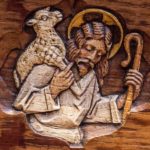

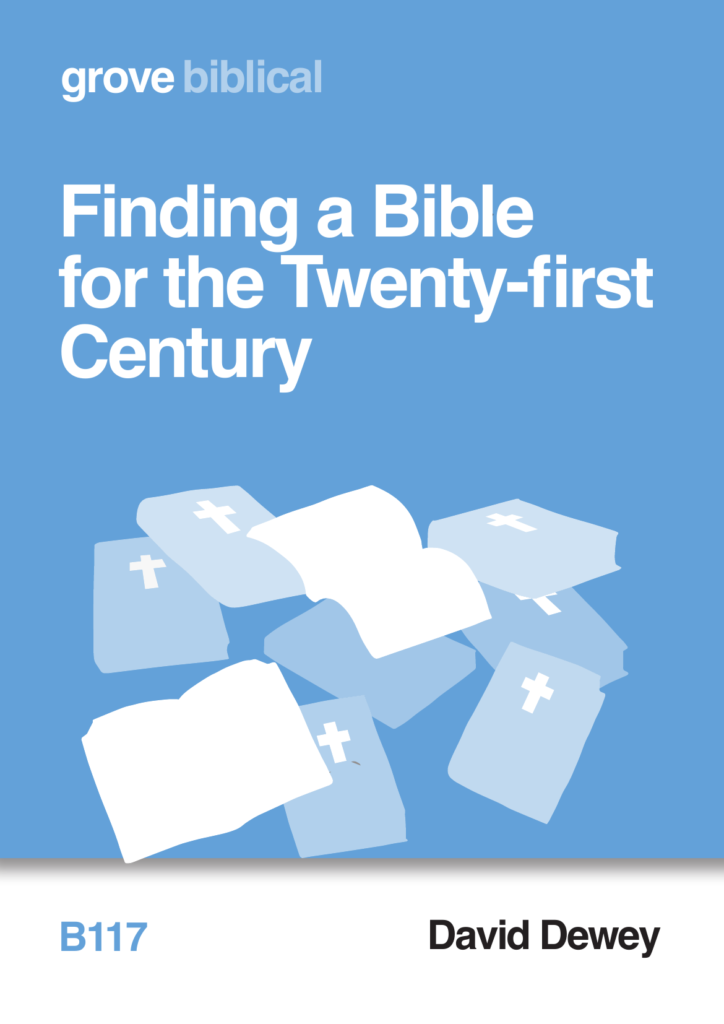








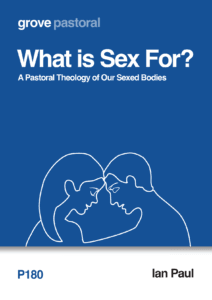
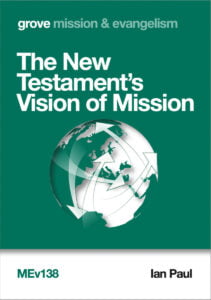
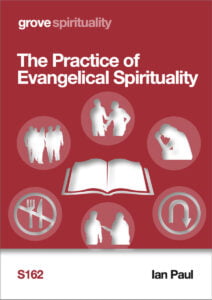
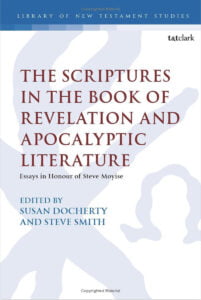
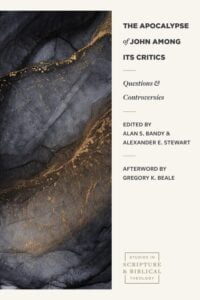
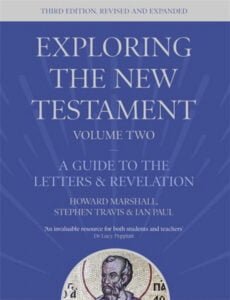
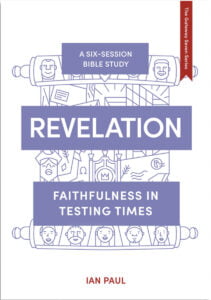
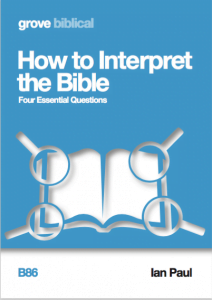
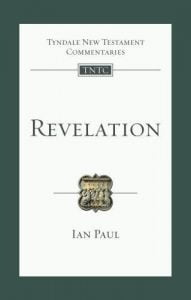
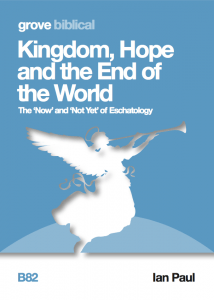
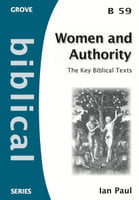
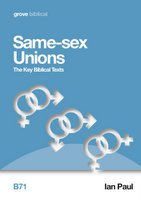

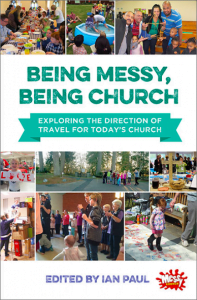
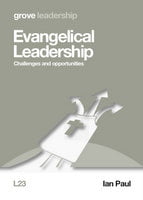
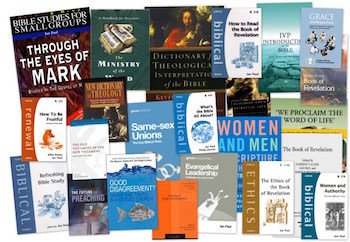
Your paragraph on the contrast between providence and purpose makes me think of John 3:8: “The wind blow where it wishes, and you hear the sound of it, but you do not know where it is coming from and where it is going; so is everyone who is born of the Spirit” (NASB)
What an untameable yet knowable God we have for those who have ears to hear and eyes to see. Our names are written in the Book of Life… and yet we have Free Will. PTL
Hi Ian
How do you understand Papias’ words regarding Matthew’s original writing apparently being in Hebrew and then translated into other languages, in relation to what we call the Gospel of Matthew?
Peter
I know this is open to debate, but for myself I think it’s highly unlikely that Jesus spoke in Hebrew. Hebrew was largely lost in the Babylonian exile and Aramaic had displaced it. So I think the debate is whether he spoke in Greek or Aramaic?
Hi Colin
That’s not really my question. Rather, Papias apparently said of Matthew (as quoted by Eusebius):
‘Therefore Matthew put the logia in an ordered arrangement in the Hebrew/Aramaic language, but each person interpreted them as best he could.’
So my question is what is the relationship, if any, between Papias’ words about Matthew’s writings and our own Gospel of Matthew. Was it a proto-gospel, or a collection of sayings of Jesus in Hebrew/Aramaic etc, which others had to translate into their own languages? Was it a completely different work than our Gospel? I understand most scholars do not believe our Matthew was translated from Hebrew/Aramaic into Greek.
Just wondered what Ian’s opinion was.
Peter
Hebrew was not lost as the language of scripture, which was read in the synagogue.
Thanks Colin, but I think this needs qualifying. Britannica says:
Aramaic dialects survived into Roman times, however, particularly in Palestine and Syria. Aramaic had replaced Hebrew as the language of the Jews as early as the 6th century BCE. Certain portions of the Bible—i.e., the books of Daniel and Ezra—are written in Aramaic, as are the Babylonian and Jerusalem Talmuds. Among the Jews, Aramaic was used by the common people, while Hebrew remained the language of religion and government and of the upper class. Jesus and the Apostles are believed to have spoken Aramaic, and Aramaic-language translations (Targums) of the Old Testament circulated. Aramaic continued in wide use until about 650 CE, when it was supplanted by Arabic.
So I think it is very possible that Jesus also spoke Hebrew. But it is likely that, in Galilee, he taught in Greek.
Aramaic continues in use today among the ‘Assyrian’ Christians of Iraq, and especially among their diaspora in Sweden and Australia.
It is fair to assume a good level of diglossia in ‘Galilee of the Gentiles’ as Gentiles and Jews lived side by side – think of Ireland and Wales anglicising in the 18th and 19th centuries. The crowds from the Decapolis who came to hear Jesus (Matthew 4) were likely Greek speakers, and there are several examples of alliteration in the Beatitudes.
Since Jesus was a rabbi who read Hebrew, it is likely that he could converse to some extent in Hebrew, just as scholars once conversed in Latin.
Thanks. I think it is more than ‘likely’! The Lord’s Prayer in Matthew is tightly structured in Greek, the opening three phrases having four words each, and the second set of three phrases having six words each. So I think this is strong evidence—unless one wants to attribute some of the greatest poetic insights and teaching to an unknown first century Jew other than Jesus!
Three years ago I was attending an NT reading group online. One of the very mixed group was a Orthodox monk called Homer, a Greek. He spoke the Koine Greek in a way corresponding to modern Greek – and it was more convincing than our standard way. However, he did reveal that Koine Greek was not that easy to understand. Languages change with time.
So, I would have my doubts that the Assyrian spoken as an everyday language today is exactly the same language spoken by those of Aram in Jesus’ time. In fact, is not the language of the early Aramaic Church preserved in the language Syriac – just as the first language of the Slavic church is preserved as Glagolitic, and, of course, Biblical Hebrew is preserved?
Biblical Hebrew is preserved because it was dead and revived in the 1850s—from the Bible.
Other languages do change, in pronunciation and meaning, because of continued use.
David – the ‘Assyrians’ are the Christians of northern Iraq. They have spoken Aramaic (or Syriac) from the earliest times. Of course it is not the same as first century Aramaic – no language remains the same over 2000 years – but is in direct continuity and their liturgies and use of the Peshitta are ancient. Aramaic never actually died out as a living language. However, this was not the dialect(s) of Aramaic spoken in first century Palestine.
As for the languages spoken in first century Palestine and by Jesus, there is a detailed discussion by Michael Wise in the Dictionary of Jesus and the Gospels, pp. 434-44. Wise notes that Hebrew was more commonly known, at least among educated people, than a previous generation allowed, esp. in the light of the Dead Sea Scrolls, where the vast majority of the writings are in Late Biblical Hebrew (LBH). Wise’s article needs to be read in toto, but he concludes (pp. 442-3) that:
1. Jesus spoke a dialect of Aramaic (perhaps a grammatically non-standard one, cf. Mark 5.41).
2. Jesus obviously could read classical Hebrew (Luke 4) and his halakhic arguments with the scribes and Pharisees were likely in a dialect of LBH.
3. Jesus’ conversations with the Roman commander and with Pilate were likely in Greek (no interpreter is mentioned, though this fact is not decisive, the Gospels often leave out circumstantial details). Lower Galilee had many Greek-speaking Gentiles, such as in the city of Sepphoris, not far from Nazareth.
Hi Peter, I think you are asking two related questions:
a. Is it likely Matthew was written in Hebrew or Aramaic, then translated into Greek?
b. What should we make of Papias’ claim?
The short answer to a is, ‘no’; this idea is just something which gives people a subject for their PhD, but I don’t think it has any virtue at all.
On b, I think the idea of individual logia which were arranged is interesting, and supports the notion that people made notes of Jesus’ teaching and actions in writing, as I think Luke 1.1 hints at. (For examples of popular literacy and note-taking, see the Vindolanda tablets.)
What language these were written in is another question, and we need to recognise that we are talking about a polyglot culture, where people often happily moved between Hebrew, Aramaic, Greek, and Latin. The case that Jesus taught primarily in Greek has been unfairly dismissed by academics—I am not sure exactly why. If so, he might have taught at times in Aramaic or Hebrew as well.
In any case, even if there were some records in another language, it seems clear to me that Matthew wrote in Greek from the outset.
ok thanks.
(I note: “XX add link to graphic of Luke’s pairings” in footnote 18.)
Well spotted. A note to myself which thankfully did not get into the published chapter!
The chart with male-female pairings in can be found here: https://www.psephizo.com/biblical-studies/the-parables-of-the-lost-in-luke-15/
But you missed the fact that footnote 20 was empty! Now filled.
Can we hear the voice of Jesus through Matthew?
Well yes, but obviously the people don’t hear it because they have been juducialy deafened and blinded.[Isaiah]
Jesus taught not only with parables but also wisdom teaching and historic recounting of the Scriptures.
*Seven in scripture has a sense not so much of perfection but of completeness; it seems as though Matthew is saying ‘Here is everything you need to know about the kingdom in the teaching of Jesus.*’ is I feel somewhat limiting.
For an excellent discussion on this see Don Carson @
Decoding the Parables: Understanding Jesus’ Method of Teaching
.thegospelcoalition.org/sermon/the-purpose-of-the-parables/
Perhaps an interesting question might be, Why does Jesus make entrance into the kingdom so difficult even given “all we need to know” about the kingdom?